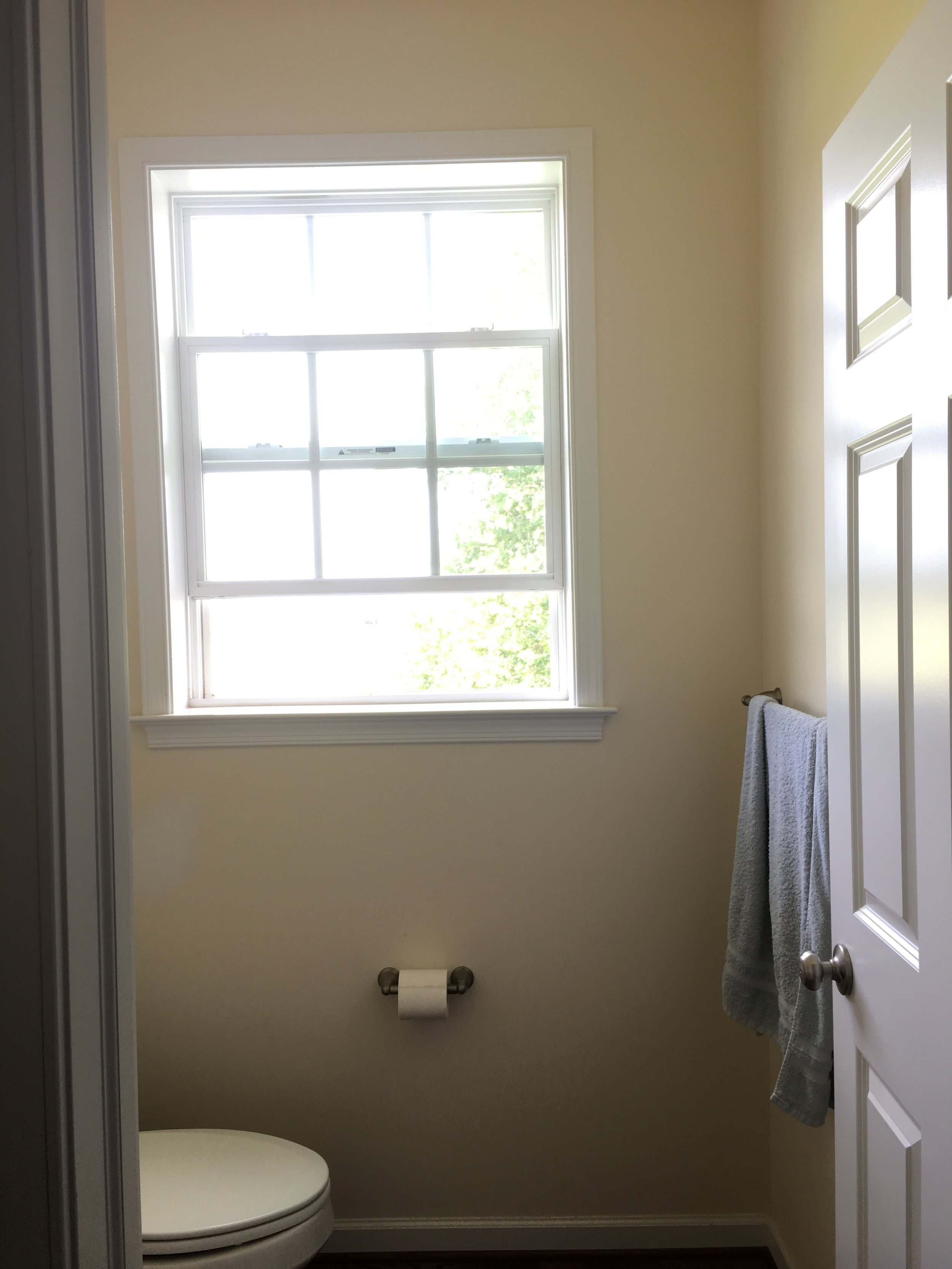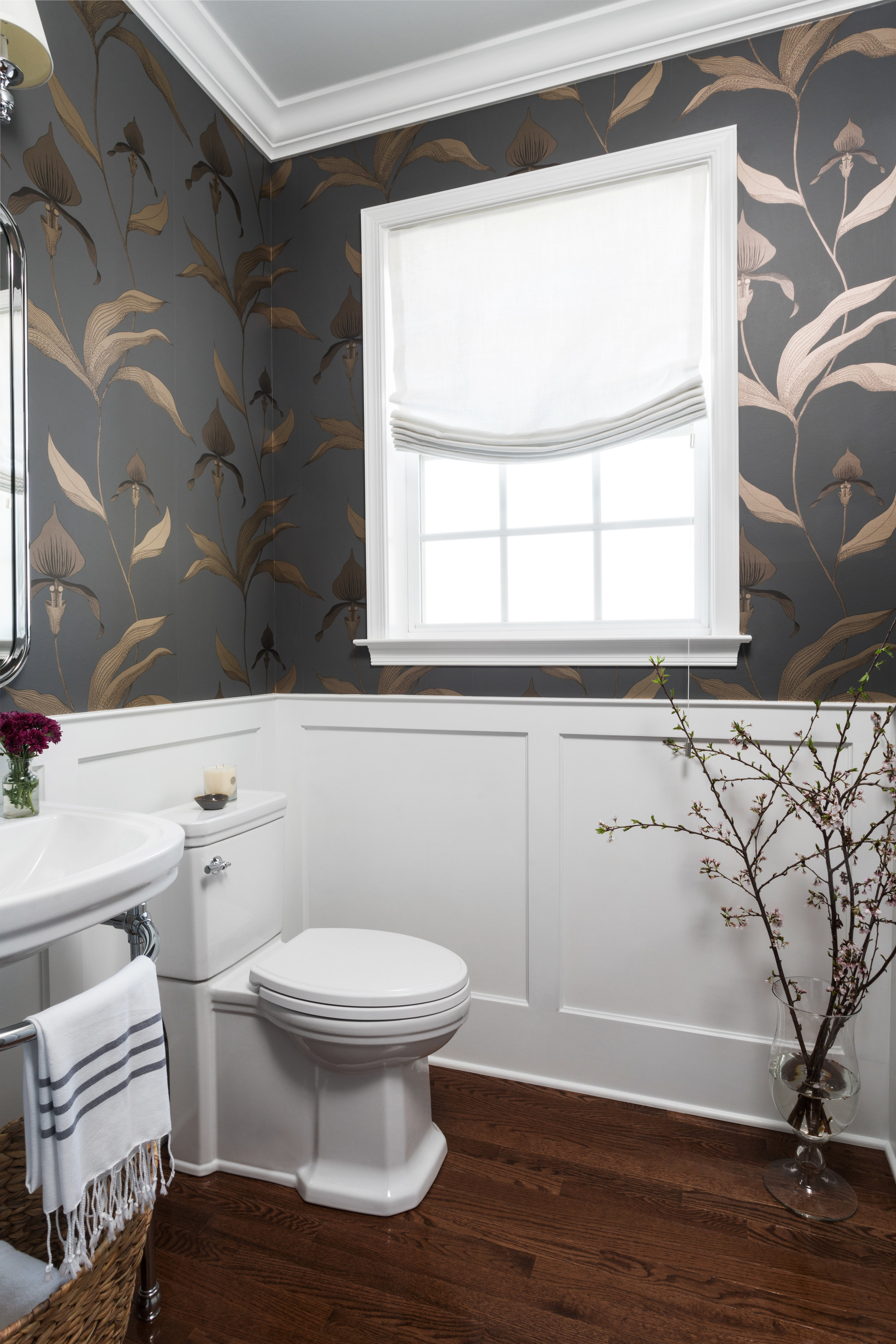How To Customize a Builder-Grade Powder Room
Building a new home can be exciting and overwhelming. On one hand, everything is fresh and new. On the other hand, the feeling of "OMG, did I really select things I like" may cross your mind. Take a deep breath and get comfy. We're going to take you through how to update a builder-grade powder room and turn it into a custom space you're sure to love.
Why Customize a Brand New Home?
The choice to embark on updating and customizing your home is never a wrong one. Why? Because you/your loved ones are unique. You have quirks, interests and tastes that deserve to be center stage in your home (especially in powder rooms). If you were able to add customization during the building process, you're ahead of the game! If you weren't (and we're speaking about more than picking cabinets and countertops), post-construction is the time to really evaluate what you want your home's story to say.
What Time of Year is Best for New Home Updates?
Timing is key with new construction. For example, we recommend the interior painting of a new home to occur after all seasons have taken place (generally one full year). This allows for any settling of the home to produce cracks, nail pops, etc. that painters can remedy during the prep work of the job. We also recommend around a year for the addition of millwork.
How Do I Infuse Personality Into a Builder-Grade Powder Room?
It's time to whip out your notepad and list everything from colors that you love to patterns you find interesting to feelings you want to have when using the space. Here are some questions to get you started:
Millwork details (woodworking) or baseboards only?
Do you prefer light or dark?
Do you prefer hard lines or curves?
Floral or geometric patterns?
Does the word "wallpaper" excite you or make you cringe?
Chrome, iron or antiqued brass?
Now that your list is complete, gather inspiration images that align with your answers. We like to create project boards with our clients on Pinterest, or send them images via email, to help gauge their likes/dislikes with the overall aesthetic and finish options we're leaning toward.
Next, take your list and inspiration images and have a heart-to-heart with your powder room. Decide what big ticket items you want to stay or go based on your budget (sink, toilet, flooring and lighting). Evaluate your ceiling height. The taller your ceilings the more fun you can have with the scale of patterns (both wallpaper and millwork) and the scale of lighting. It's also helpful to tape wallpaper samples to the wall to get a feel for what it will look like once hung. We recommend the same for paint - apply a 6x6 square on each wall to truly appreciate the color and how it changes with the light in your home throughout the day.
Do you love large-scale art or gallery walls? Those are great alternatives to wallpaper and millwork if you have a smaller budget. Take all of your answers to the above and apply them when looking for art or images to place in frames.
Don't forget about lighting! As discussed in the Project Abby Road: Dining Room Design Process post, lighting can truly be the star of your design. If your budget is limited and rewiring to accommodate a fabulous new pendant and applying new paint is all you can tackle, we promise your powder room update will still pack a punch.
If flooring is in your budget and you'd like to change it, options are endless. You can nix wallpaper and let a patterned ceramic floor tile be the focus. Or if you're a more simple, textural and neutral lover like me, go with a tile that has a grain or veining to it, like faux wood or marble.

Before: Project Abby Road Powder Room

Before: Project Abby Road Powder Room
Implementing Your Powder Room Design
Measure. Measure. Measure. This is a clear must if you are changing the footprint of the space or if your current plumbing fixtures (toilet, vanity/pedestal sink) will be swapped out. And remember, if you are hoping to change the footprint, plumbing adjustments equal budget adjustments.
Where you source your plumbing fixtures matters. We recommend plumbing supply stores/showrooms to ensure the components of the materials are top notch (brass). Plastic plumbing interiors may save you money when sourced at the big box stores but they will only cause headaches (and cost you money) down the road.
Will you work with a contractor or DIY? Again, both have budget impacts so be sure to get a quote to factor in labor costs. It's also important to ensure that whoever is hanging paper or installing millwork has experience you can review (if you will be installing, YouTube is your friend). Ask for images of their work or to speak with references. These finishes can be a large part of your budget, so you want to be sure they are implemented with care and give you the final result you worked so hard to curate.
If you take the large-scale art or gallery wall route, map out your placement by cutting pieces of paper in the sizes you're attracted to and tape them to the wall. There are endless options for gallery wall designs, but a good rule of thumb is to keep the heavier pieces of art (in both size and frame thickness) as your grounding layers and place the lighter pieces above or to their upper sides to balance the eye.
To finish off the space, integrate more than art in your design. Accessories such as baskets, an accent rug, textiles or even flowers and potted plants, can up the design game by adding additional textures and colors to the space. It's also another layer to integrate your personality so your new powder room is truly an extension of your home's story.

After: Project Abby Road Powder Room
